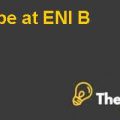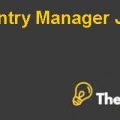
2012 FUEL HEDGING AT JETBLUE AIRWAYS Case Solution
INTRODUCTION
The hedging of fuel is an important factor in the overall success of the company because the fuel represents about 40% of the JetBlue airways costs. Many other companies like Jet Blue airways have implemented strong risk management programs, which majorly consisted of hedging the risks related to fluctuation in prices of crude oil and jet fuel, many airlines in United States are heavily hedging their position to reduce any potential loss that may arise in future.The airline companies in United States are especially more inclined towards hedging the fuel because in USA, there are more fluctuations than in any of the other region of the world. The reasons behind such increase in the prices are dependent on several factors, such as Middle East crisis.Any sudden demand oil from China also contribute in the fluctuation of prices in United States.Jet Blue is a US based entity,it is thus more prone towards hedging its position.Moreover,it is also evident that fuel hedging has protected the airline’s costs structure in the recent years, especially during oil crisis of 1973.
The company has effectively used hedging strategies in the past several years in different future markets, such as WTI or Brent.Nowadays, because of significant changes in premiums and prices between the futures of different markets, JetBlue airways is finding itself in the situation where it is very complex to select one market among many to hedge its fuel cost position. This case is all about the selection of market and future hedging strategies. Lastly, this document is also accompanied with the role and the use of derivatives in the fuel hedging, root cause analysis of the increase in prices, the major and minor issues the companies like JetBlue airways are currently experiencing or might counter in future, the possible solution and finally, the recommendation of option that is suitable for Jet Blue airways in the current global environment surrounding the jet fuel and crude oil markets.
HOW THE COMPANIES DO THE FUEL HEDGING AND HOW CAN IT USE DERIVATIVE TO HEDGE THE RISK.
Hedging is used in many regions as a technique to reduce risks related to the main assets through dealing in the underlying assets, the fuel hedging is also same.Companies like JetBlue airways, whose main costs are related to fuel, are more prone to losses if companies face any adverse change in the global oil prices.Thus,Airlines normally bought assets under several hedging contracts to mitigate their risks, the aim of the company that hedges is to reduce a particular risk that it faces and it wants to make sure that it is protected against the negative effects or adverse changes in prices.However now, from past several years, the companies have realized that they may use different other hedging techniques to mitigate their risk of exposure to volatile and potentially rising fuel costs. The most common method large airlines or large fuel consuming entities adopt is the hedging with vertical integration and storage.The term vertical integration means that the company buys its supplier or at least carries out the agreement with its supplier to control the prices or to mitigate any loss, even in case of rise in oil prices. Hedging is similar to insurance; for example, the buying of a supplier is insurance for airlines in case of any loss or significant hits to profits.Therefore,an airline can merge with an oil company in an attempt to offset oil prices.....................
This is just a sample partial case solution. Please place the order on the website to order your own originally done case solution.













